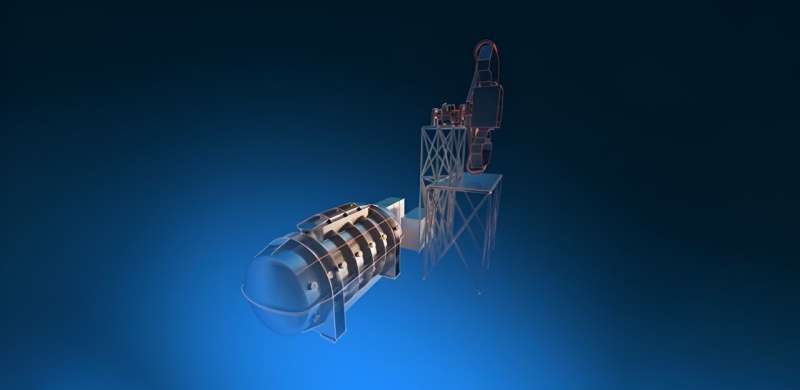This article has been reviewed according to Science X's editorial process and policies. Editors have highlighted the following attributes while ensuring the content's credibility:
fact-checked
trusted source
proofread
New instrument to search for signs of life on other planets

The European Southern Observatory (ESO) has signed an agreement for the design and construction of ANDES, the ArmazoNes high Dispersion Echelle Spectrograph.
The ANDES instrument will be installed on ESO's Extremely Large Telescope (ELT), currently under construction in Chile's Atacama Desert. It will be used to search for signs of life in exoplanets and look for the very first stars. It will also test variations of the fundamental constants of physics and measure the acceleration of the universe's expansion.
The University of Cambridge is a member institution on the project, which involves scientists from 13 countries. Professor Roberto Maiolino, from Cambridge's Cavendish Laboratory and Kavli Institute for Cosmology, is ANDES Project Scientist.
Formerly known as HIRES, ANDES is a powerful spectrograph, an instrument which splits light into its component wavelengths so astronomers can determine properties about astronomical objects, such as their chemical compositions.
The instrument will have a record-high wavelength precision in the visible and near-infrared regions of light and, when working in combination with the powerful mirror system of the ELT, it will pave the way for research spanning multiple areas of astronomy.
"ANDES is an instrument with an enormous potential for groundbreaking scientific discoveries, which can deeply affect our perception of the universe far beyond the small community of scientists," said Alessandro Marconi, ANDES Principal Investigator.
ANDES will conduct detailed surveys of the atmospheres of Earth-like exoplanets, allowing astronomers to search extensively for signs of life. It will also be able to analyze chemical elements in faraway objects in the early universe, making it likely to be the first instrument capable of detecting signatures of Population III stars, the earliest stars born in the universe.
In addition, astronomers will be able to use ANDES' data to test if the fundamental constants of physics vary with time and space. Its comprehensive data will also be used to directly measure the acceleration of the universe's expansion, one of the most pressing mysteries about the cosmos.
When operations start later this decade, the ELT will be the world's biggest eye on the sky, marking a new age in ground-based astronomy.
Provided by University of Cambridge



















